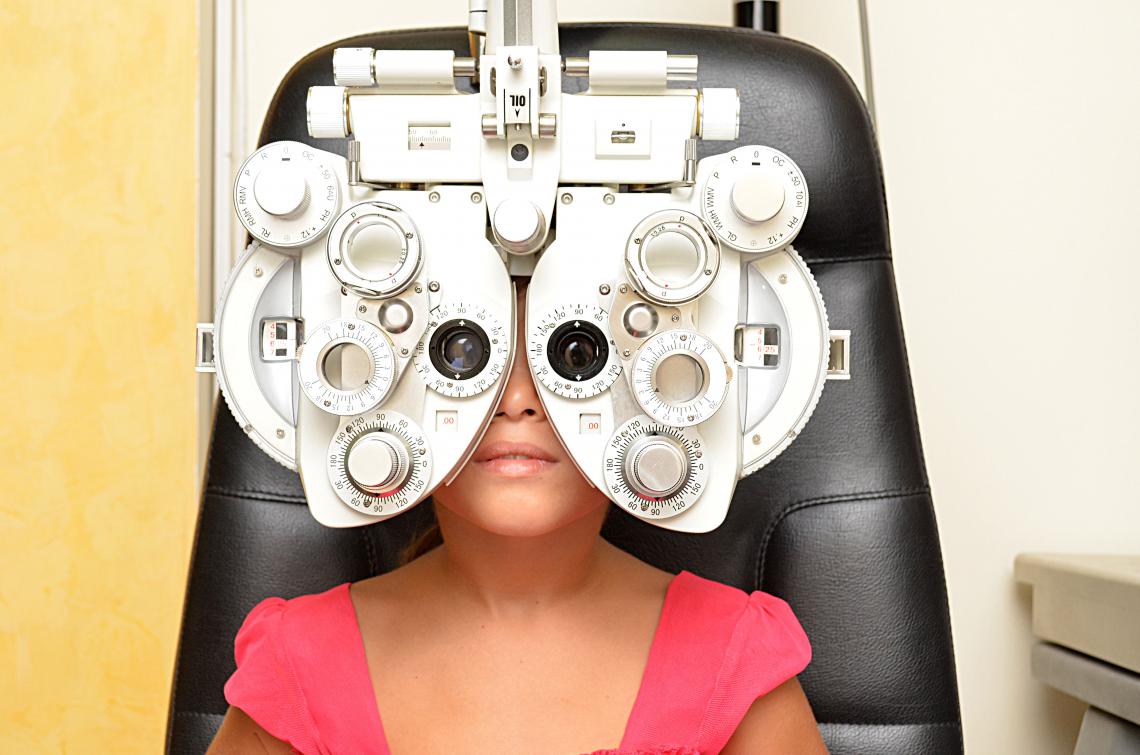Discovering the current Technological Developments in Optometry and What They Mean for Eye Doctors
In the ever-evolving area of optometry, current technical improvements are reshaping how practitioners come close to eye treatment. From the accuracy of Optical Comprehensibility Tomography to the nuanced insights provided by AI-driven analysis tools, these advancements are establishing brand-new criteria in individual analysis and therapy. Teleoptometry is positioned to redefine availability, ensuring that competence goes beyond geographical constraints. As these advancements penetrate the practice, optometrists are encountered with the obstacle of embracing these tools to enhance client outcomes. Yet, the concern remains: just how will these technological changes redefine the roles and responsibilities within the career?
Advancements in Diagnostic Devices
Progressing the area of optometry, developments in analysis devices have revolutionized the method eye care experts analyze and diagnose visual impairments and ocular conditions. The previous years has seen significant technical developments, allowing more exact and extensive analyses.
An additional secret technology is the introduction of sophisticated corneal topography systems, which map the surface curvature of the cornea with precision. These devices are especially valuable for fitting get in touch with lenses and identifying corneal disorders. In addition, electronic retinal imaging has actually transformed standard ophthalmoscopy, supplying in-depth, breathtaking sights of the retina that help with thorough visual evaluations.
The development of wavefront aberrometry has actually also been critical, making it possible for the analysis of refractive mistakes with unequaled accuracy (Optometrist Chino). This innovation aids in personalizing restorative lenses and improving medical results for refractive surgical treatments. Jointly, these diagnostic innovations empower optometrists to provide remarkable person treatment, making sure very early intervention and tailored treatment strategies, ultimately enhancing aesthetic health outcomes
AI in Person Monitoring
Building on the structure of sophisticated diagnostic devices, the incorporation of expert system (AI) in client monitoring represents a transformative leap for optometry. AI systems are increasingly used to enhance effectiveness, accuracy, and personalization in patient treatment. By evaluating substantial quantities of data, AI can determine patterns and anticipate potential eye problems, enabling optometrists to customize treatments extra effectively. This capacity is important in handling persistent eye illness such as glaucoma and diabetic person retinopathy, where early detection and continual monitoring are key.
Additionally, AI-driven platforms facilitate streamlined individual interactions and management processes. Automated scheduling, online assessments, and personalized follow-up strategies not only boost patient complete satisfaction however also optimize time monitoring for specialists. These systems can triage people based on the necessity of their problems, making certain that those in crucial requirement receive punctual attention.
Furthermore, AI improves decision-making by providing optometrists with evidence-based suggestions and therapy pathways. By incorporating data from electronic health and wellness records, AI devices use insights that educate scientific choices, minimizing the danger of mistakes and boosting individual end results. As AI continues to progress, its role in person administration will likely increase, reshaping the landscape of optometric treatment.
Advancements in Retinal Imaging
In the world of optometry, retinal imaging has actually experienced impressive technological innovations that are boosting diagnostic capabilities and person care. Advancements such as Optical Comprehensibility Tomography (OCT) and fundus photography have changed exactly how eye doctors visualize and analyze the retina. OCT, in particular, supplies high-resolution, cross-sectional pictures of the retina, enabling the detailed examination of its layers. This ability is vital for very early discovery and monitoring of conditions like glaucoma, diabetic person retinopathy, and age-related macular deterioration.
Improved imaging modalities like OCT angiography are additional refining diagnostic precision. Opticore Optometry. Such advancements assist in the recognition of minute retinal adjustments that could indicate illness progression.
Moreover, developments in fabricated knowledge are augmenting retinal imaging by enabling automatic analysis of large datasets. These systems assist eye doctors in determining patterns a sign of pathology, therefore improving diagnostic accuracy and effectiveness. Jointly, these developments are transforming retinal imaging right into a cornerstone of contemporary eye care, enhancing outcomes and increasing therapeutic possibilities.
Teleoptometry's Growing Duty
Teleoptometry is increasingly coming to be an essential component of eye care, driven by developments in data and diagnostic devices. As optometry embraces electronic change, teleoptometry promotes remote examinations, allowing eye doctors to extend their solutions beyond traditional boundaries. This is particularly beneficial in rural and underserved locations where access to specialized eye treatment is usually why not look here limited. By leveraging high-resolution video clip conferencing and progressed retinal imaging, optometrists can carry out thorough eye tests from afar, ensuring timely medical diagnosis and treatment.
The combination of expert system (AI) more enhances teleoptometry, enabling the evaluation of aesthetic data and assisting in the discovery of ocular problems such as glaucoma and diabetic retinopathy. AI-powered formulas can quickly translate complex imaging data, offering eye doctors with important insights that bolster scientific decision-making.
Furthermore, teleoptometry sustains connection of treatment with smooth combination with digital wellness documents (EHRs), permitting optometrists to maintain extensive client histories. When seeking advice from with various specialists., this makes certain that clients get personalized and constant care also.
In spite of these benefits, challenges stay, including making sure information safety and security and handling patient expectations. Teleoptometry represents a substantial stride in the direction of useful site more available, reliable, and patient-centered eye care. As innovation develops, its role is positioned to increase additionally.

Future Trends in Eye Treatment
A myriad of innovative fads is set to reshape the future of eye treatment, driven by technological innovations and the progressing demands of patients. One substantial fad is the combination of fabricated intelligence (AI) in diagnostics, which guarantees to improve the precision and performance of eye examinations. AI formulas can analyze vast amounts of data from retinal pictures, possibly finding conditions like diabetic retinopathy and glaucoma earlier than conventional techniques.
Moreover, individualized medicine is getting grip in optometry, with hereditary screening educating tailored treatment plans. This technique aims to maximize person results by tailoring treatments to private genetic profiles. Wearable innovation, such as wise get in touch with lenses, is also coming up, using real-time monitoring of intraocular pressure or glucose levels, thus offering constant understandings right into ocular and systemic health.
The fostering of augmented fact (AR) and virtual reality (VIRTUAL REALITY) in training and client education is another arising fad. These modern technologies use immersive experiences that can enhance understanding and skills both for optometrists and individuals. As these fads advance, optometrists must remain abreast of technological improvements to supply cutting-edge treatment, making sure better patient end results and complete satisfaction in the dynamic landscape of eye treatment.
Conclusion

Jointly, these diagnostic innovations encourage optometrists to supply remarkable individual treatment, guaranteeing very early intervention and tailored treatment approaches, ultimately improving visual health and wellness outcomes.

As these technologies continue to progress, optometrists have to adapt and integrate them into practice, eventually maximizing process effectiveness and elevating the criterion of eye treatment supplied to people.